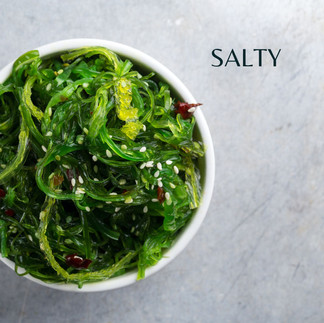Food is Medicine - The 6 Tastes of Ayurveda
- Emilie Berger
- Jan 23, 2024
- 3 min read
Ayurveda sees food in a vary different way than Western society does. The 6 Tastes of Ayurveda are linked to the 5 elements that compose us (Ether/ Air/ Fire/ Water/ Earth), and in order to nourish all tissues and support all systems of the body, we want to include all 6 tastes in every meal.
The proportions and amounts recommended for each person, however, depend on your state of balance/ imbalance and health. Food is medicine !
Some examples are: sweet fruits, most grains, root veggies, ghee and milk, meats and fish, coconut, almonds, cashews etc
The sweet taste is a building taste, one that strengthens and nourishes every part of our system. It is soothing and grounding, and increases our vitality and immunity. It wants to be an important player on our plate, and is a good ally and partner. It promotes strength, longevity, and healthy bodily fluids and tissues. It also contributes to slow digestion.
In excess and not balanced by the other 5 tastes, it brings heaviness, sluggishness, and smothers our ability to digest well and efficiently.
Some examples are: citrus, fermented and pickled foods, sourdough breads, cheese and yogurt, alcohol etc.
The sour taste stimulates appetite, increases saliva, helps with the secretion of digestive enzymes, and is a good ally for digestion in general. It is stimulating, energizing and can help move stagnation. It awakens our thoughts and emotions, while improving appetite, digestion and elimination.
In excess and not balanced by the other 5 tastes, it can be quite drying, aggressive, and can be too heating and actually prevent proper digestion.
Some examples are: rock and sea salts, soy sauce, seaweed, cheese, olives, anchovies etc
The salty taste increases salivation and helps « cook » our food further. It supports digestion, absorption, assimilation and elimination. It can help retain moisture in the body, helps with electrolyte balance and absorption of minerals. It’s also quite energizing and supports flow of energy.
In excess or not balanced by the other 5 tastes, it can be quite drying and increase heat in the body, leading to skin imbalances and impacting the blood.
Some examples are: garlic, onion, chilies, mustard seeds, ginger, black pepper, but also radishes, leeks, and most spices (cardamom, cloves, paprika, cumin for example).
The pungent taste kindles the digestive fire, can improve digestion, absorption and elimination, and has cleansing and clarifying properties. It’s stimulating and invigorating, heightens the sense and stimulates blood circulation. It can be really useful when needing to address stagnation or to clear accumulation in the body.
In excess or not balanced by the other 5 tastes, it creates imbalance in the nervous system and excess heat and inflammation. It can have a big mental and emotional impact, causing anxiousness, anger, frustration, and a mind that can’t settle.
Some examples are: leafy greens, eggplant, burdock, bitter melon, sesame, coffee, dark chocolate, turmeric, fenugreek.
The bitter taste is a supremely medicinal taste. It supports the liver and the blood, can be a digestive tonic, and has great overall cleansing and detoxifying actions.
In excess or not cooked well or balanced by the other 5 tastes, it can dry and deplete tissues, and make us feel ungrounded and aggravate feelings of nervousness and instability.
Some examples are: apples, cranberries, pomegranate, beans and lentils, cabbages, potatoes, rye, tea, wine, turmeric.
The astringent taste is easy to spot, it’s the type of food that pulls moisture out of the mouth, or gets pasty when you eat it alone, with nothing else. Think of a cooked chickpea or potato. It absorbs excess moisture, is helpful for excess mucous, can help cohesiveness and tones tissues. It can provide a sense of groundedness
In excess or when inappropriately prepared, the sense of groundedness turns into heaviness. It is alsovery drying and can imbalance the digestive fire and system. It may slow things down too much and create stagnation.
The astringent taste needs adequate cooking, proper spicing and the addition of sour and sweet tastes to support it. Small quantities for most people are best.
---
THE CONTENT AND PRODUCTS OF THIS WEBSITE ARE NOT INTENDED TO BE A SUBSTITUTE FOR PROFESSIONAL MEDICAL ADVICE, DIAGNOSIS, OR TREATMENT. ALWAYS SEEK THE ADVICE OF YOUR PHYSICIAN OR OTHER QUALIFIED HEALTH PROVIDER WITH ANY QUESTIONS YOU MAY HAVE REGARDING A MEDICAL CONDITION. NEVER DISREGARD PROFESSIONAL MEDICAL ADVICE OR DELAY IN SEEKING IT BECAUSE OF SOMETHING YOU HAVE READ ON THIS WEBSITE. IF YOU THINK YOU MAY HAVE A MEDICAL EMERGENCY, CALL YOUR DOCTOR, GO TO THE EMERGENCY DEPARTMENT, OR CALL 911 IMMEDIATELY.













































Comments